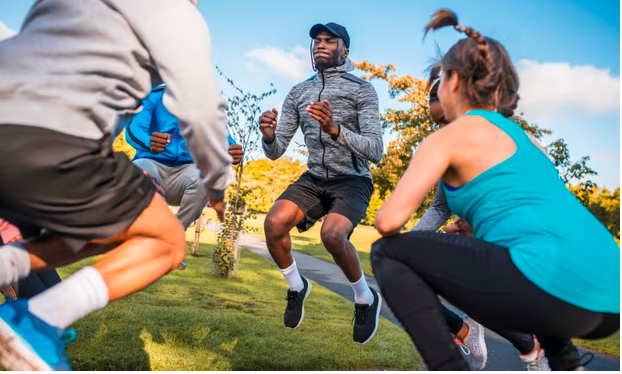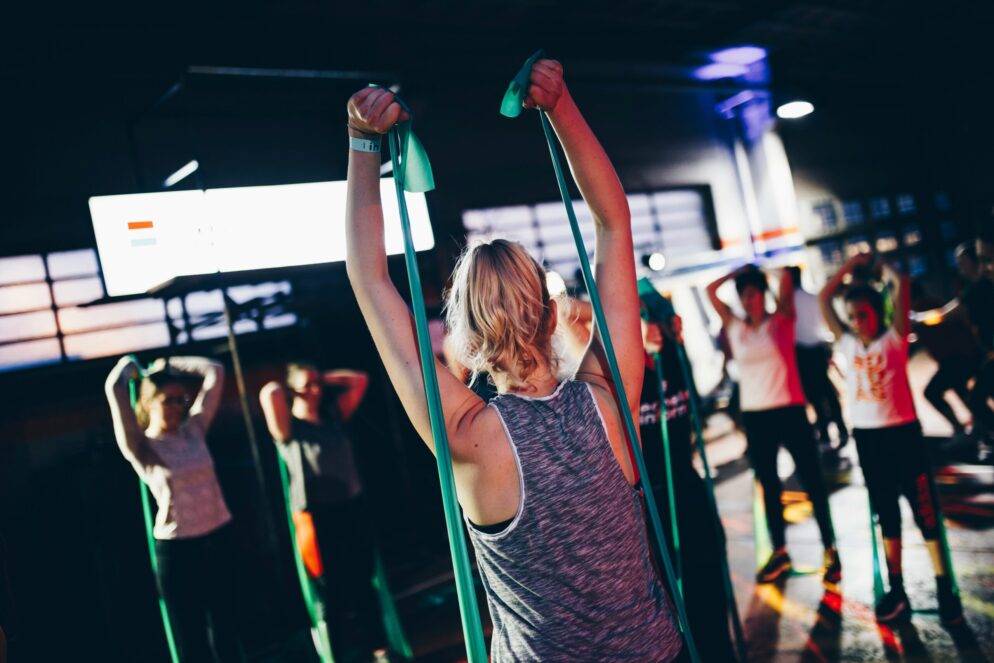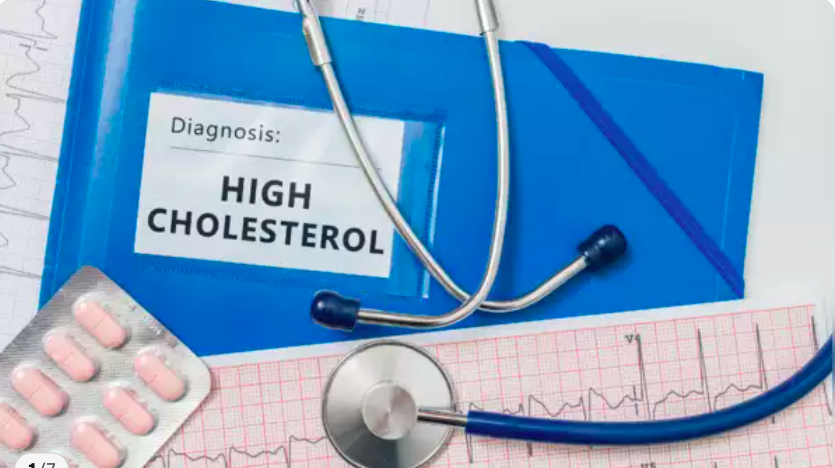Health
The Impact of Bike Riding on Cardiovascular Health

The Impact of Bike Riding on Cardiovascular Health
Cardiovascular health is crucial for overall well-being. It refers to the health of the heart and blood vessels, which play a vital role in supplying oxygen and nutrients to the body’s organs and tissues. Regular physical activity, such as bike riding, is known to have a positive impact on cardiovascular health.
When you ride a bike, your heart rate increases, and your body starts to work harder to meet the increased demand for oxygen. This increased heart rate strengthens the heart muscle over time, making it more efficient at pumping blood throughout the body.
As a result, the heart becomes stronger and can pump more blood with each beat, which leads to improved cardiovascular health.
Furthermore, bike riding is a type of aerobic exercise, which means it increases your breathing and heart rate for an extended period. This sustained activity helps to improve lung function and increase the capacity of the lungs to take in oxygen.
With improved lung function, your body can deliver oxygen more efficiently to your muscles, allowing them to work harder and for longer durations.
Another benefit of bike riding is its impact on blood pressure. Regular cycling helps to reduce both systolic and diastolic blood pressure, which are the top and bottom numbers of a blood pressure reading.
High blood pressure is a risk factor for cardiovascular diseases, such as heart attacks and strokes. By incorporating bike riding into your routine, you can help lower your blood pressure and reduce the risk of developing these conditions.
Bike riding also helps to improve the health of your blood vessels. As you pedal, the rhythmic contraction of your leg muscles promotes better blood flow throughout your body.
This increased blood flow helps to keep your blood vessels healthy and prevents the buildup of plaque, which can lead to blockages and restrict blood flow.
In addition to these cardiovascular benefits, bike riding is a low-impact exercise that is gentle on the joints. Unlike running or high-impact sports, cycling does not put excessive stress on the knees, hips, and ankles.
This makes it an ideal form of exercise for individuals with joint problems or those recovering from injuries. bike riding is an excellent way to improve cardiovascular health.
Its ability to increase heart rate, improve lung function, lower blood pressure, enhance blood flow, and provide a low-impact workout makes it a highly beneficial form of exercise.
Whether you choose to ride your bike outdoors or use a stationary bike indoors, incorporating regular cycling into your routine can have a significant positive impact on your cardiovascular health.
Improved Mental Health
In addition to the physical benefits, bike riding can also have a positive impact on your mental well-being. When you ride a bike, your body releases endorphins, also known as “feel-good” hormones.
These hormones can help boost your mood and reduce feelings of stress, anxiety, and depression. Bike riding can also provide a sense of freedom and escape from the daily pressures of life, allowing you to clear your mind and focus on the present moment.
Enhanced Brain Function
Regular exercise, including bike riding, has been linked to improved brain function. When you engage in physical activity, your brain receives a greater supply of oxygen and nutrients, which can enhance cognitive function, memory, and concentration.
Bike riding can also stimulate the growth of new brain cells and improve the connections between existing cells, leading to better overall brain health.
Increased Bone Density
Cycling is a weight-bearing exercise, which means that it puts stress on your bones, making them stronger and denser. Regular bike riding can help prevent age-related bone loss and reduce the risk of osteoporosis. Stronger bones are less prone to fractures and injuries, contributing to better overall physical health and mobility.
Improved Sleep Quality
Engaging in regular physical activity, such as bike riding, can improve the quality of your sleep. When you exercise, your body temperature rises, and after your workout, it gradually decreases, promoting a state of relaxation and facilitating sleep.
Additionally, bike riding can help regulate your circadian rhythm, the internal clock that controls your sleep-wake cycle, leading to more restful and rejuvenating sleep.
Social Interaction
Bike riding can also provide opportunities for social interaction and connection. Joining a cycling group or participating in organized rides can help you meet like-minded individuals who share your passion for biking. Engaging in group rides or cycling events can be a fun way to connect with others, build friendships, and create a sense of community.
Tips for Getting Started with Bike Riding
If you’re new to bike riding or looking to get back into it, here are some tips to help you get started:
Choose the Right Bike
Investing in a bike that suits your needs and body type is essential. Visit a local bike shop to get expert advice on selecting the right bike for you. Consider factors such as your height, riding style, and the terrain you’ll be cycling on.
Start Slowly
If you’re new to cycling or haven’t ridden a bike in a while, it’s important to start slowly and gradually increase your intensity and duration. Begin with short rides at a comfortable pace and gradually build up to longer and more challenging rides.
Wear Protective Gear
Always prioritize safety when biking. Wear a well-fitted helmet to protect your head in case of a fall or accident. Additionally, consider wearing reflective clothing and using lights on your bike to enhance visibility, especially when riding in low-light conditions.
Find Safe Routes
Plan your routes in advance and choose bike-friendly paths or roads with dedicated bike lanes. Avoid busy streets or areas with heavy traffic to ensure a safer and more enjoyable riding experience.
Listen to Your Body
Pay attention to how your body feels during and after your rides. If you experience any pain or discomfort, take a break and consult with a healthcare professional if necessary. It’s important to listen to your body and not push yourself beyond your limits.
Stay Hydrated
When cycling, it’s important to stay hydrated to maintain your energy levels and prevent dehydration. Carry a water bottle with you and take regular sips of water during your rides. If you’re planning a longer ride, consider bringing electrolyte-rich sports drinks to replenish lost minerals.
Warm Up and Cool Down
Before starting your ride, take a few minutes to warm up your muscles with some light stretching or a short walk. This will help prevent injuries and improve your overall performance. After your ride, take the time to cool down and stretch again to reduce muscle soreness and promote recovery.
Join a Cycling Group
Consider joining a local cycling group or club to meet fellow cyclists and gain support and motivation. Group rides can be a great way to explore new routes, learn from more experienced riders, and make new friends who share your passion for biking.
Maintain Your Bike
Regularly check your bike for any signs of wear and tear, such as loose bolts, worn-out brake pads, or chain issues. Keep your tires properly inflated and lubricate the chain regularly. If you’re unsure how to maintain your bike, consult with a professional bike mechanic for guidance.
Have Fun!
Remember that bike riding is not just about fitness and transportation; it’s also about having fun and enjoying the outdoors. Explore new areas, take scenic routes, and embrace the freedom that comes with cycling. Don’t be afraid to try new things and challenge yourself, but always prioritize your safety and enjoyment.
What equipment do I need for bike riding?
When it comes to bike riding, having the right equipment is essential for a safe and enjoyable experience. Here are some key items you’ll need:
- Bicycle: Choose a bike that suits your riding style and preferences. There are various types of bicycles available, such as road bikes, mountain bikes, and hybrid bikes.
- Helmet: Protect your head by wearing a well-fitting helmet. Look for helmets that meet safety standards and provide adequate ventilation.
- Apparel: Wear comfortable clothing that allows freedom of movement. Consider wearing padded shorts for added comfort during long rides. Additionally, invest in a moisture-wicking jersey to keep you dry and cool.
- Shoes and Pedals: Opt for cycling shoes that are compatible with your bike’s pedal system. Clipless pedals provide a secure connection between your shoes and the pedals, enhancing efficiency and power transfer.
- Water Bottle and Cage: Stay hydrated during your rides by carrying a water bottle. Attach a bottle cage to your bike frame for easy access.
- Repair Kit: Carry essential tools and spare parts, such as a tire pump, spare tubes, tire levers, and a multi-tool. This will allow you to handle minor repairs or adjustments on the go.
- Lights and Reflectors: If you plan to ride in low-light conditions or at night, ensure that your bike is equipped with front and rear lights, as well as reflectors for visibility.
By having the right equipment, you’ll be well-prepared and ready to embark on your bike riding adventures.
In conclusion,
incorporating bike riding into your routine can have numerous benefits for your cardiovascular health. From improved heart health and increased lung capacity to lower blood pressure and weight management, regular cycling can contribute to a healthier cardiovascular system.
Additionally, bike riding can enhance your mental well-being, brain function, bone density, sleep quality, and social interaction. So, hop on your bike and start reaping the many rewards that this enjoyable activity has to offer!
Health
6 Daily Habits to Naturally Lower Cholesterol Levels
Health
Understanding the Rapid Spread of Monkeypox’s New Strain Clade 1b

Understanding the Rapid Spread of Monkeypox’s New Strain Clade 1b: Key Facts on Transmission, Symptoms, Severity, and Vaccination
Monkeypox, a viral disease with symptoms resembling smallpox, has recently gained attention due to the emergence of a newstrain, Clade 1b.
This article delves into the essential details about this new variant, including how it spreads, its symptoms, its severity, and the current state of vaccinations.
Our goal is to provide a comprehensive and clear understanding of this evolving situation, enabling readers to stay informed and prepared.
Monkeypox, once a rare and somewhat obscure disease, has recently become a significant public health concern due to the emergence of new strains.
Among these, Clade 1b has been noted for its rapid spread and distinct characteristics.
As we navigate through the complexities of this variant, it is crucial to grasp the fundamentals of its transmission, symptoms, severity, and preventive measures, including vaccination.
Understanding Monkeypox Clade 1b
What is Monkeypox?
Monkeypox is a zoonotic virus belonging to the Orthopoxvirus genus, which also includes smallpox.
First identified in monkeys, it can infect humans through close contact with infected animals or individuals.
While it shares similarities with smallpox, monkeypox tends to be less severe and less transmissible.
Clade 1b Overview
Monkeypox has several clades (strains), with Clade 1b being the most recent and notable for its rapid spread.
This strain has shown increased transmissibility compared to previous clades, raising concerns among public health officials.
Transmission of Clade 1b
Modes of Transmission
Clade 1b spreads primarily through:
- Direct Contact: Contact with bodily fluids, skin lesions, or contaminated surfaces of an infected person.
- Respiratory Droplets: Prolonged face-to-face interaction can lead to transmission through respiratory droplets.
- Animal Contact: Infected animals, particularly rodents and primates, can transmit the virus to humans.
Environmental Factors
Transmission rates can also be influenced by environmental factors such as:
- Crowded Living Conditions: Higher transmission rates are observed in densely populated areas.
- Sanitation Practices: Poor hygiene and sanitation can facilitate the spread of the virus.
Symptoms of Monkeypox Clade 1b
Early Symptoms
The symptoms of Clade 1b may resemble those of other viral infections, making initial diagnosis challenging.
Early symptoms include:
- Fever: A sudden onset of high temperature.
- Headache: Severe headaches that can persist for days.
- Muscle Aches: Generalized muscle pain and discomfort.
- Fatigue: Extreme tiredness and weakness.
Rash and Skin Lesions
A defining feature of monkeypox is the rash, which typically progresses through several stages:
- Macules: Flat, discolored spots on the skin.
- Papules: Raised bumps.
- Vesicles: Fluid-filled blisters.
- Pustules: Pus-filled lesions that eventually crust over.
Severe Symptoms
In more severe cases, symptoms may include:
- Encephalitis: Inflammation of the brain, leading to neurological symptoms.
- Pneumonia: Infection of the lungs that can cause difficulty breathing.
- Secondary Infections: Bacterial infections that may complicate the healing process.
Severity of Clade 1b
General Outlook
Clade 1b has been associated with a higher transmission rate and more severe outcomes compared to other strains. However, the overall severity can vary widely among individuals.
Factors influencing severity include:
- Immune System Status: Individuals with weakened immune systems or pre-existing conditions may experience more severe symptoms.
- Age: Young children and elderly individuals are at higher risk of severe illness.
- Timeliness of Medical Care: Early medical intervention can significantly affect the outcome.
Mortality Rates
The mortality rate for Clade 1b is currently under study, but initial data suggest it may be higher than previous strains. Prompt medical attention and supportive care are crucial in reducing the risk of severe outcomes.
Vaccination and Prevention
Current Vaccines
Vaccination is a key strategy in controlling the spread of monkeypox.
The following vaccines are relevant:
- Smallpox Vaccine: The smallpox vaccine is effective against monkeypox due to the similarities between the viruses. It provides protection for those who have been recently vaccinated or who received it in the past.
- Monkeypox-Specific Vaccine: Research is ongoing into vaccines specifically targeting monkeypox, with several candidates showing promise in trials.
Vaccination Recommendations
Public health authorities recommend vaccination for:
- Healthcare Workers: Individuals who are at higher risk due to their profession.
- High-Risk Populations: People in areas experiencing outbreaks or those with frequent exposure to infected individuals.
Preventive Measures
In addition to vaccination, preventive measures include:
- Good Hygiene: Regular handwashing and use of hand sanitizers.
- Avoiding Contact: Minimizing close contact with individuals displaying symptoms or with infected animals.
- Isolation: Infected individuals should isolate themselves to prevent the spread of the virus.
Conclusion
The emergence of Monkeypox Clade 1b represents a significant challenge to global health. Its increased transmissibility and potential for severe outcomes highlight the importance of staying informed and proactive.
By understanding its transmission, symptoms, and preventive measures, individuals and communities can better protect themselves and mitigate the impact of this new strain.
FAQs
1. What makes Clade 1b different from other monkeypox strains?
Clade 1b is noted for its increased transmissibility and potentially more severe outcomes compared to other strains.
It spreads faster and may lead to more serious health issues, necessitating closer monitoring and enhanced preventive measures.
2. How can I tell if I have monkeypox or another viral infection?
Monkeypox often begins with flu-like symptoms and progresses to a distinct rash.
If you experience these symptoms, especially if you’ve been in contact with someone who has monkeypox or are in an outbreak area, seek medical advice for accurate diagnosis and testing.
3. Is the smallpox vaccine effective against Monkeypox Clade 1b?
Yes, the smallpox vaccine offers protection against monkeypox, including Clade 1b, due to the similarities between the two viruses.
However, its effectiveness may vary based on factors such as time since vaccination and individual health conditions.
4. Are there any new vaccines specifically for monkeypox?
Research is ongoing to develop and approve vaccines specifically targeting monkeypox.
Several candidates are in various stages of clinical trials, with some showing promising results in enhancing protection against monkeypox strains, including Clade 1b.
5. What should I do if I suspect I have monkeypox?
If you suspect you have monkeypox, contact a healthcare provider immediately. They can guide you through testing, diagnosis, and appropriate care.
In the meantime, practice good hygiene and avoid close contact with others to prevent spreading the virus.
References:
Health
Understanding the Low Risk of Mpox Outbreak in India and Our Preparedness Measures

-

 Trending Stories1 year ago
Trending Stories1 year agoCDC: 1 in 4 Americans Still COVID-Free by End of 2022
-

 Health5 years ago
Health5 years agoMeghan Trainor Shares Motivational New Song ‘Blink’
-

 Health2 years ago
Health2 years agoHow Long Does Monkey Pox Last Before It Surfaces in the Body?
-

 Health2 years ago
Health2 years agoWhat Causes Swollen Body? Understanding Edema and its Triggers
-

 Health4 months ago
Health4 months agoHow Do Pawpaw Seeds Support Cardiovascular Health?
-

 Health3 years ago
Health3 years agoNutrition and the Importance of a Fitness Program – 3 Things to Know
-

 Health3 years ago
Health3 years ago5 Weird Reasons Why Pimples Disappear After Marriage
-

 Health2 years ago
Health2 years agoHealth Benefits Of Pawpaw Seed? 7 Things To Know












